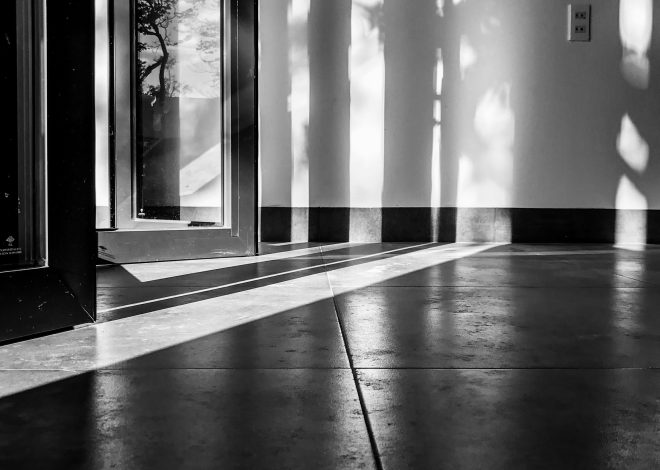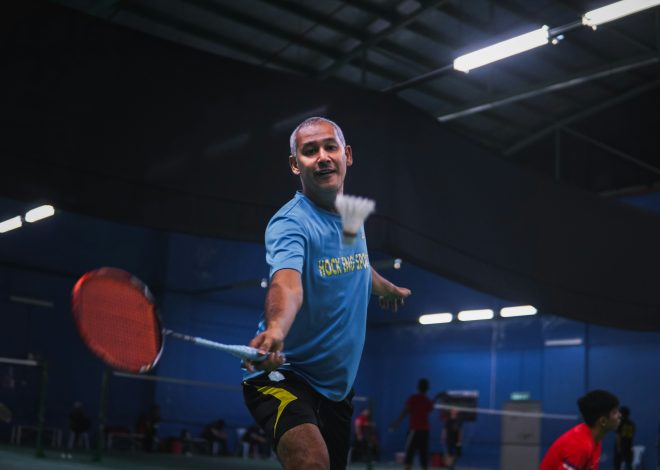What Are the Top Flooring Choices for Badminton Courts?
What Are the Top Flooring Choices for Badminton Courts?
Introduction to badminton and its popularity
Badminton has taken the world by storm, captivating players and fans alike with its fast-paced action and athleticism. Whether played casually in backyards or fiercely in competitive arenas, this sport brings people together, promoting fitness and teamwork. As badminton continues to grow in popularity globally, creating the perfect environment for play becomes essential. One of the most critical factors influencing performance is the choice of flooring for badminton courts.
Choosing the right floor not only affects gameplay but also ensures safety and comfort for athletes. With various options available, knowing what works best can make all the difference on game day. Let’s explore what you need to consider when selecting flooring for your badminton court and discover which materials stand out as top choices!
Factors to consider when choosing flooring for badminton courts
Choosing the right flooring for badminton courts requires careful consideration. First, think about the level of play. Recreational players may have different needs than competitive athletes.
Next, consider safety features. The flooring should provide adequate grip to prevent slips and falls during fast-paced games. It’s essential for injury prevention.
Another factor is shock absorption. A good floor helps reduce impact on joints, which is crucial for long sessions of play.
Don’t overlook maintenance requirements either. Some materials are easier to clean and maintain than others, impacting your long-term costs and effort.
Evaluate how the flooring affects ball bounce and speed. Different surfaces can significantly alter gameplay dynamics, influencing player performance and enjoyment alike.
Types of flooring suitable for badminton courts
When selecting flooring for badminton courts, the options vary significantly in material and performance.
Wood flooring is a classic choice. It offers excellent shock absorption and provides a smooth surface that enhances player movement. Many professionals prefer this type due to its natural feel.
Synthetic flooring has gained popularity for its versatility. Made from materials like vinyl or polyurethane, it delivers durability and consistent playing conditions. These surfaces often feature added cushioning to reduce impact on joints.
Rubber flooring stands out for its resilience and grip. This non-slip option ensures players can make swift movements without worry of slipping. It’s particularly beneficial in multi-use facilities where different sports are played.
Each type of flooring brings unique benefits, catering to various preferences and requirements within the sport of badminton.
A. Wood flooring
Wood flooring is a classic choice for badminton courts, loved for its natural beauty and Badminton Court excellent performance. The smooth surface allows players to glide effortlessly, making quick footwork possible.
One of the standout features of wood is its resilience. High-quality hardwoods like maple or oak are commonly used due to their durability. These materials can withstand intense play while providing a consistent bounce that feels great underfoot.
Moreover, wood flooring absorbs shock well, reducing strain on joints during those explosive movements typical in badminton matches. This characteristic not only enhances player comfort but also helps prevent injuries over time.
Maintenance is relatively straightforward too; regular cleaning and periodic refinishing keep the court looking pristine. While it may require more care than synthetic options, many players appreciate the traditional feel and aesthetic appeal that wooden floors provide.
B. Synthetic flooring
Synthetic flooring is a popular choice for badminton courts, thanks to its versatility and performance. Made from materials Badminton court customization like vinyl or polyurethane, it offers excellent shock absorption and traction.
This type of flooring allows players to move freely without the fear of slipping. The surface can be customized in terms of color and design, making it visually appealing as well.
One significant advantage is that synthetic floors are often easier to install than traditional wood options. This means shorter downtime for facilities looking to renovate or build new courts.
Moreover, they require minimal maintenance compared to natural materials. A simple cleaning routine keeps them looking fresh and functional over time.
For those seeking a consistent playing experience across different venues, synthetic flooring delivers uniformity in bounce and feel that’s hard to match elsewhere.
C. Rubber flooring
Rubber flooring has become a popular choice for badminton courts due to its excellent shock absorption. This feature significantly reduces the risk of injuries, making it an appealing option for players who engage in intense matches.
Another advantage of rubber is its versatility. Available in various colors and textures, it can create an inviting atmosphere that enhances the overall court experience. Whether you’re playing recreationally or competitively, rubber flooring provides a solid grip while allowing smooth lateral movements.
Maintenance is relatively simple as well. Regular cleaning with soap and water keeps it looking fresh without much effort. Moreover, rubber’s durability ensures that it withstands wear and tear over time.
Cost-wise, rubber falls within a moderate range compared to other materials like wood or specialized synthetic options. For facilities on a budget but seeking quality performance, rubber flooring stands out as an efficient solution for badminton courts.
Maintenance and durability of each type of flooring
Wood flooring requires regular maintenance to preserve its appearance and performance. It should be cleaned with a soft broom or vacuum regularly, and occasional resealing is necessary to prevent moisture damage. While it offers great aesthetics, wear over time can mean refinishing every few years.
Synthetic flooring is often low-maintenance. A simple mop with mild detergent suffices for cleaning. Its durability shines through as it resists scratches and scuffs better than most materials.
Rubber flooring stands out for its resilience. It’s easy to clean and doesn’t require extensive upkeep. Just sweep or mop occasionally to keep it looking fresh.
Each type has its own set of care instructions but generally, synthetic and rubber options offer easier long-term maintenance compared to wood alternatives while still providing excellent playability on the badminton court.
Cost comparison between different types of flooring
When it comes to selecting flooring for badminton courts, cost can vary significantly based on materials.
Wood flooring tends to be on the higher end of the spectrum. It offers a classic look and excellent performance but requires a larger budget for installation and maintenance.
Synthetic flooring is often more affordable. Prices can range depending on quality but generally provide good value for money without compromising too much on playing experience.
Rubber flooring falls in between these two options. While it may not have the same aesthetic appeal as wood, its durability makes it ideal for high-traffic areas, which could save long-term costs.
Investing in any type of court surface also means considering upkeep expenses over time. Cheaper options might require frequent repairs or replacements, making them less economical in the long run.
Recommendations from professional badminton players and coaches
Professional badminton players and coaches emphasize the importance of choosing the right flooring for optimal performance. Many recommend wood flooring due to its excellent shock absorption and natural feel. They believe it allows for better footwork and movement during intense matches.
Synthetic surfaces also receive high praise, particularly those designed specifically for badminton. Coaches highlight their consistency in bounce, which can significantly impact gameplay.
Rubber flooring is often suggested for training facilities due to its durability and lower maintenance needs. Players appreciate its grip but note that it may not offer the same responsiveness as wood or synthetic options.
Each professional has unique preferences based on their playing style and experience. Their insights can guide enthusiasts in selecting a surface that enhances both practice sessions and competitive play.
Conclusion: The best overall choice for badminton court flooring
When it comes to selecting the best flooring for badminton courts, several factors play a crucial role. Players seek surfaces that provide excellent grip, shock absorption, and durability. Each type of flooring has its unique advantages and drawbacks.
Wood flooring remains a classic choice for professional badminton courts. It offers superior performance with great elasticity and is gentle on the joints, making it ideal for long matches. Many players appreciate its natural feel underfoot.
Synthetic flooring is another contender, made from materials like vinyl or polyurethane. These surfaces are often easier to install and maintain than wood while providing good traction and cushioning. They also come in various colors and designs to match your venue’s aesthetics.
Rubber flooring presents an economical option that’s gaining popularity due to its resilience against wear and tear. This material provides excellent shock absorption but may not deliver the same level of responsiveness as wood or synthetic options.
Maintenance varies across these choices—wood requires regular refinishing, while synthetic floors need occasional cleaning without extensive upkeep demands. Rubber floors can be easily cleaned but might show scuff marks over time.
Cost-wise, rubber tends to be more affordable upfront compared to wood or high-quality synthetic solutions; however, longevity should factor into your decision-making process too.
Insights from professional players lean toward wooden floors when performance matters most—but preference often depends on individual needs regarding budget constraints or maintenance capabilities.
Deciding on the right surface involves balancing quality with practicality based on how frequently you expect to use your badminton court along with any specific player requirements that could enhance their experience during games.

